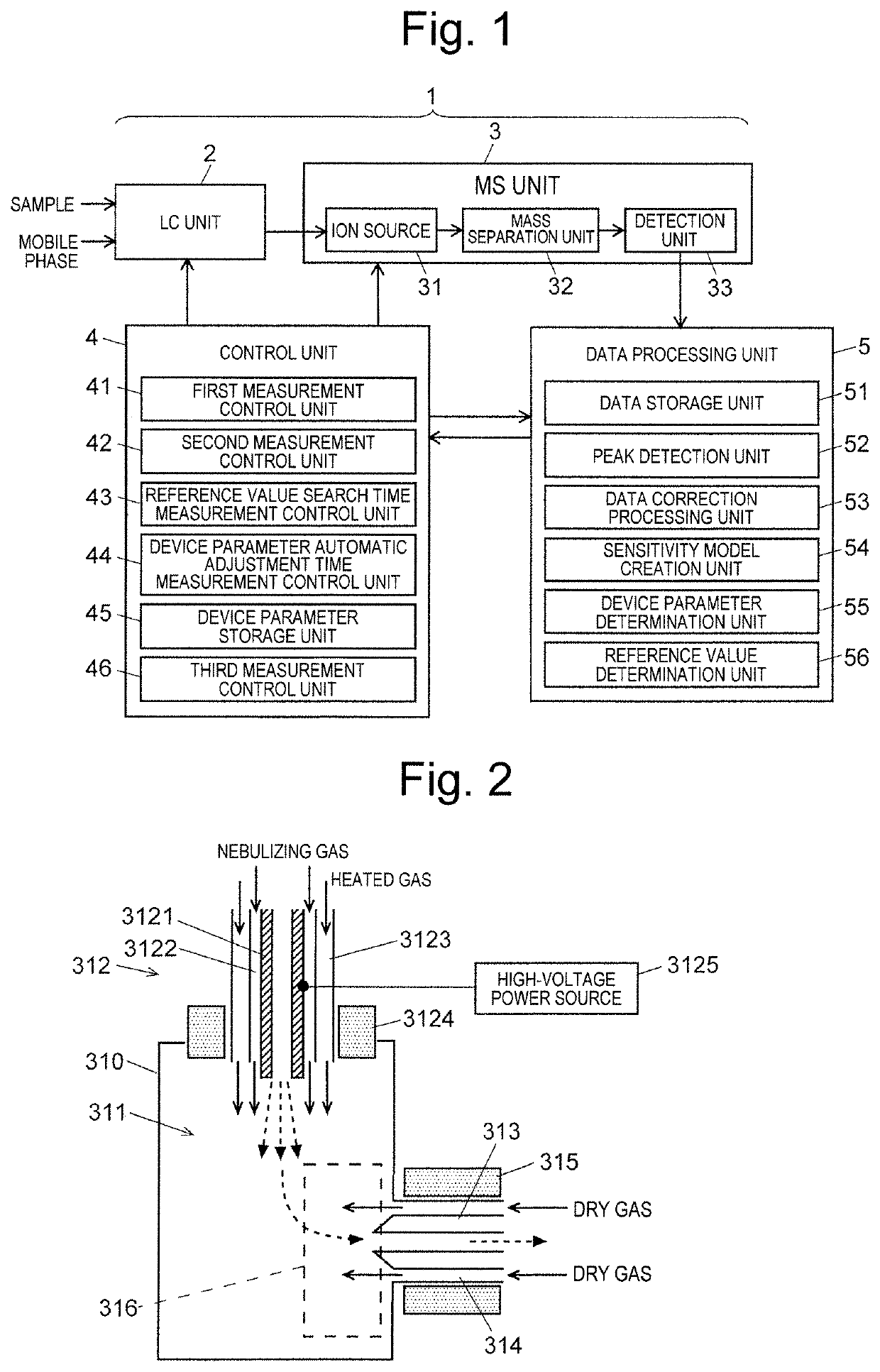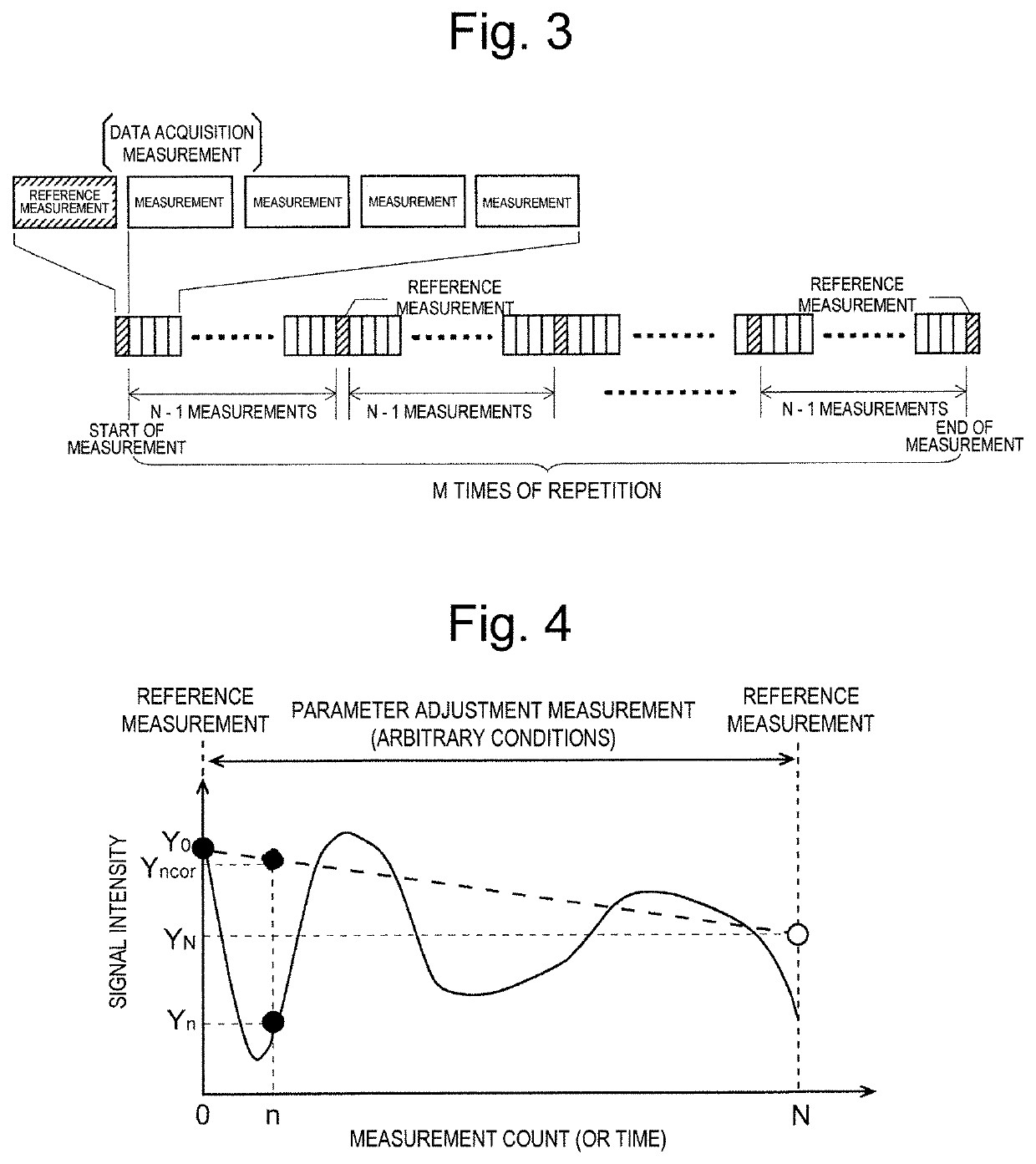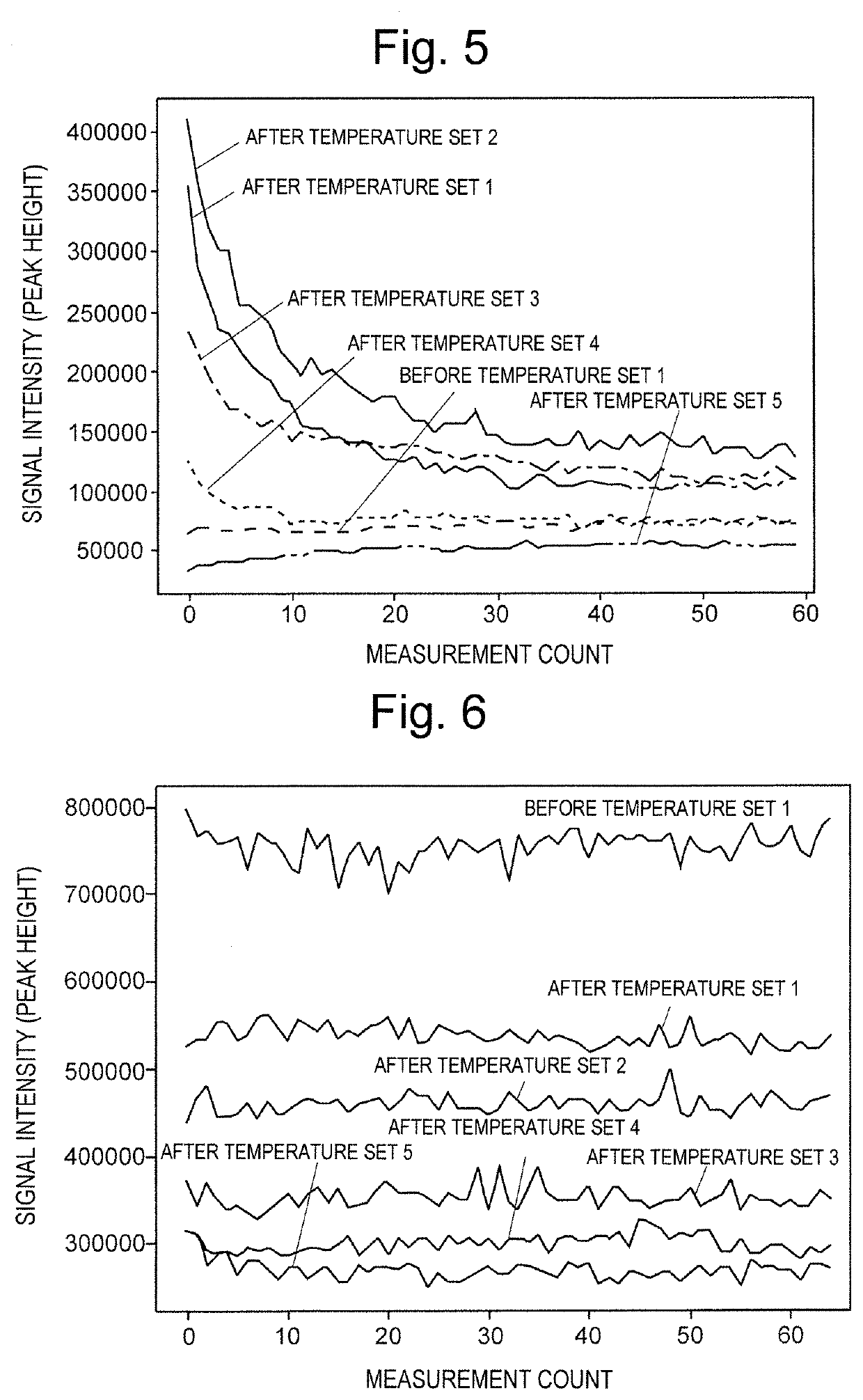Mass spectrometer and mass spectrometry method
- Summary
- Abstract
- Description
- Claims
- Application Information
AI Technical Summary
Benefits of technology
Problems solved by technology
Method used
Image
Examples
Embodiment Construction
[0034]An LC-MS which is an embodiment of a mass spectrometer according to the present invention will be described with reference to the accompanying drawings.
[Overall Configuration of LC-MS of Present Embodiment]
[0035]FIG. 1 is a schematic block configuration diagram of an LC-MS according to the present embodiment.
[0036]Referring to FIG. 1, a measurement unit 1 includes a liquid chromatograph unit (LC unit) 2 and a mass spectrometry unit (MS unit) 3. The mass spectrometry unit 3 includes an ion source 31, a mass separation unit 32, and a detection unit 33.
[0037]Although not illustrated, the liquid chromatograph unit 2 includes a liquid feeding pump, an injector, and a column, injects a predetermined amount of sample from the injector into the mobile phase fed by the liquid feeding pump, and feeds the sample into the column on the flow of the mobile phase. Various components (compounds) in the sample are temporally separated while passing through the column, eluted from the column ou...
PUM
 Login to View More
Login to View More Abstract
Description
Claims
Application Information
 Login to View More
Login to View More - R&D
- Intellectual Property
- Life Sciences
- Materials
- Tech Scout
- Unparalleled Data Quality
- Higher Quality Content
- 60% Fewer Hallucinations
Browse by: Latest US Patents, China's latest patents, Technical Efficacy Thesaurus, Application Domain, Technology Topic, Popular Technical Reports.
© 2025 PatSnap. All rights reserved.Legal|Privacy policy|Modern Slavery Act Transparency Statement|Sitemap|About US| Contact US: help@patsnap.com



